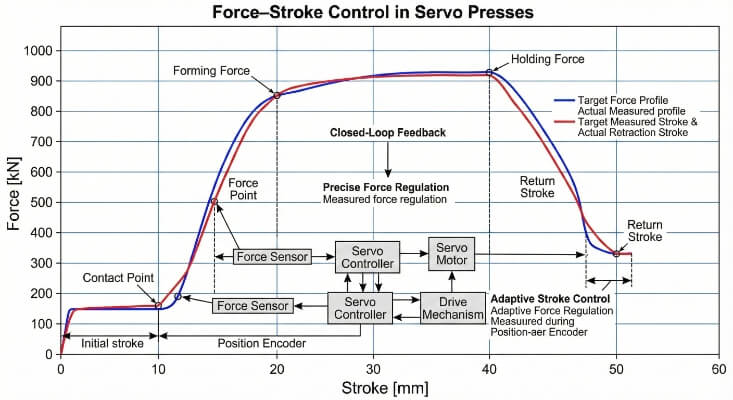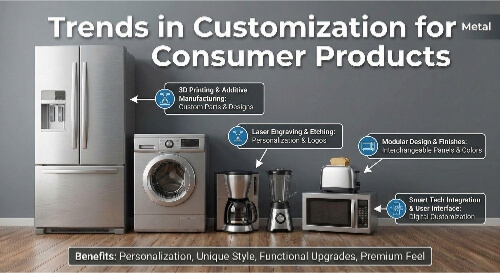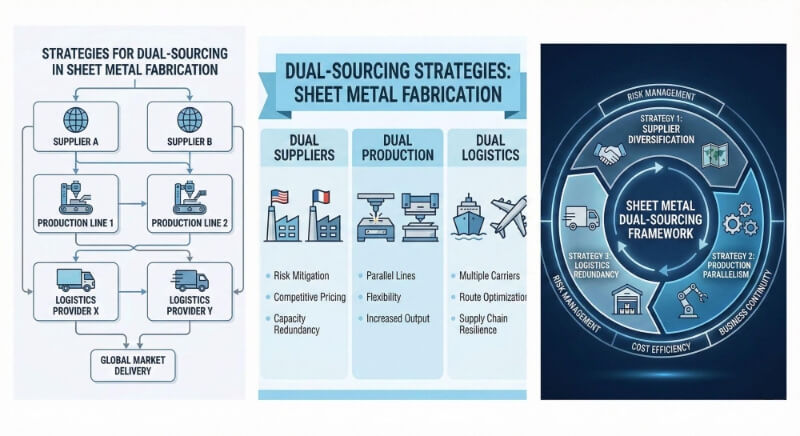Manufacturing products with sheet metal poses unique challenges. Many engineers and designers struggle with precision cutting, material waste, and inconsistent quality in their production runs. Sheet metal blanking offers a solution to streamline your manufacturing process while maintaining high accuracy and reducing costs.
Want to level up your manufacturing knowledge? Let’s delve into its processes, benefits, and applications.
What Is Sheet Metal Blanking?
Sheet metal blanking is a manufacturing technique that involves cutting flat metal sheets into specific shapes using a die. This process creates precise, usable parts by applying force to punch out desired forms from the sheet.
It is widely used across various industries for its efficiency, accuracy, and ability to minimize material waste, making it essential for high-quality production.
Sheet Metal Blanking Process: Step-by-Step
Below is a step-by-step breakdown of how sheet metal blanking works:
Step 1: Preparation of Material
Based on the desired final product, select the appropriate metal sheet. After selection, the metal sheets are cleaned to remove any contaminants that could affect cutting quality.
Step 2: Designing the Die
The die consists of a punch and a die cavity tailored to the shape of the desired blank. Engineers must ensure that the die design accommodates the material’s properties and thickness.
Step 3: Loading the Material
The metal sheet is positioned on the blanking press, aligning it correctly with the die to ensure accurate cutting. The sheet is clamped or held using pressure or mechanical clamping systems to prevent movement.
Step 4: Blanking Process
With everything set up, the blanking operation can commence. The punch descends onto the metal sheet, exerting a significant force that shears through the material along the die’s edges.
Step 5: Removing the Blank
Once the blank is separated, the material is ejected from the die cavity using ejection pins or a similar mechanism.
Step 6: Inspecting the Blanks
Each blanked part undergoes a thorough inspection to identify any defects, such as burrs or dimensional inaccuracies.
Step 7: Post-Processing (if necessary)
Depending on the application, post-processing steps may be required.
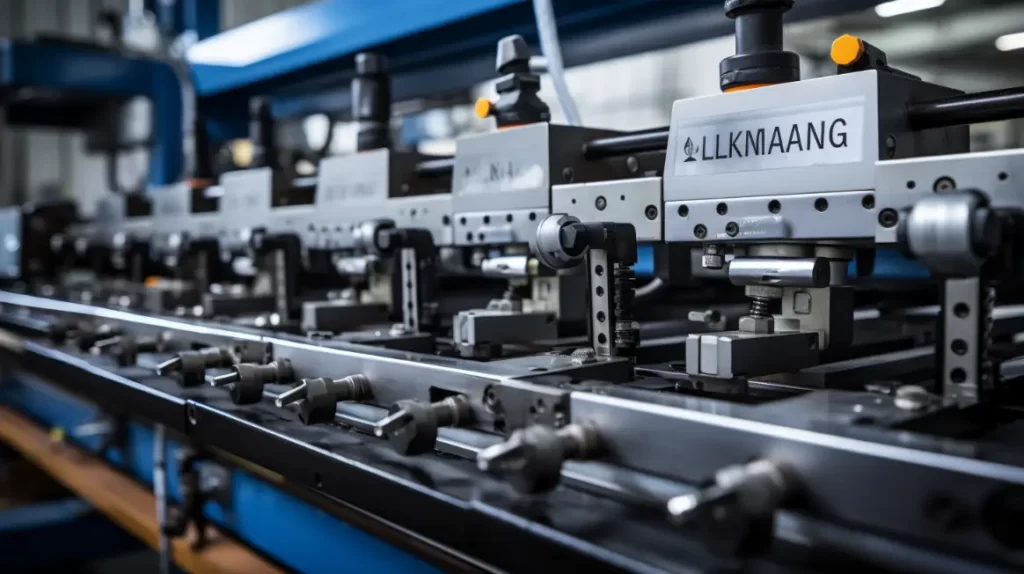
Types of Blanking Processes
Sheet metal blanking comes in several specialized forms, each suited for different production needs and quality requirements. Let’s examine each method’s unique characteristics and applications.
Conventional Blanking
Conventional blanking cuts metal sheets with a single punch strike and die. The process creates a clean cut on one side while leaving a rougher edge with slight distortion on the other.
Progressive Die Blanking
Progressive die blanking moves the metal sheet through multiple stations, performing different operations at each step. The sheet advances automatically, creating complex parts with high efficiency and minimal handling.
Fine Blanking
Fine blanking uses three distinct forces to produce parts with superior edge quality. The process creates components with smooth, square edges and tight tolerances, ideal for precision applications.
Compound Die Stamping
Compound die stamping performs multiple blanking operations in a single press stroke. This method creates more complex shapes and reduces secondary operations, boosting production efficiency.
Cutoff
Cutoff blanking focuses on separating long strips or coils into specific lengths. The process uses straight-line cuts to create rectangular or square blanks for further processing.
Square Sheared Blanking
Square sheared blanking produces precise rectangular or square blanks with minimal edge distortion. The method uses synchronized shearing actions to maintain material flatness and dimensional accuracy.
Types of Blanking Machines
The choice of a blanking machine directly affects production speed, accuracy, and cost. Here’s a detailed look at two main categories of blanking equipment.
Hydraulic Press
Hydraulic presses operate by pumping fluid into a cylinder, which drives a piston that exerts pressure on the material. This method allows for consistent and controlled force, making hydraulic presses ideal for deep drawing, forming, and intricate shaping tasks.
Mechanical Press
Mechanical presses operate using a flywheel that stores energy, which is then transferred to the ram for metalworking operations. It can achieve rapid cycle times, making them suitable for high-volume manufacturing environments.
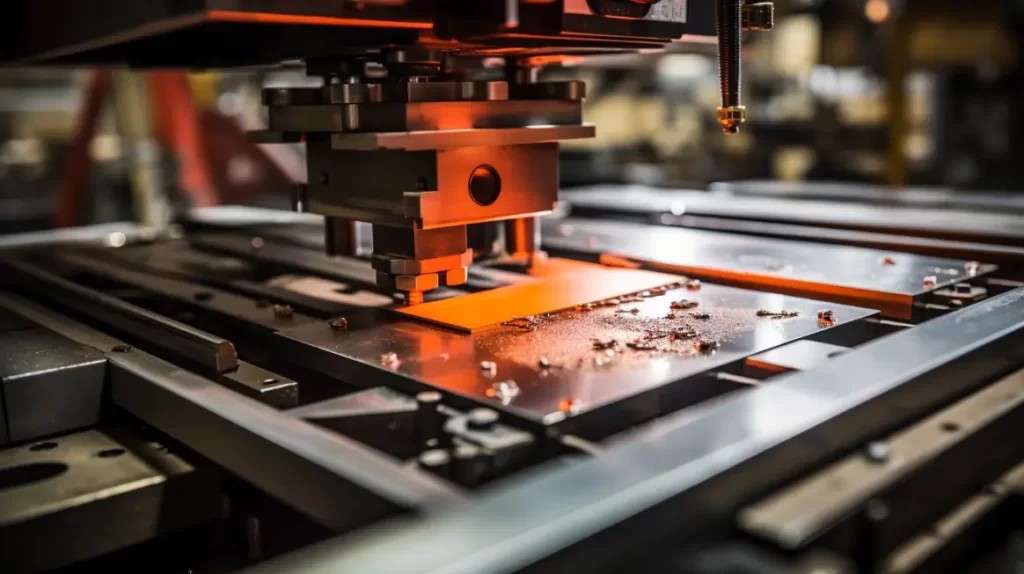
Materials Used in Sheet Metal Blanking
The success of blanking operations largely depends on material selection. Here are some common metals:
- Carbon Steel
- Stainless Steel
- Aluminum Alloys
- Copper and Brass
- Tool Steel
Factors Affecting the Blanking Process
The quality of blanked parts depends on various interconnected factors. Each element must be carefully controlled to achieve optimal results.
Material Thickness and Type
Thicker materials require more force to shear, which can affect the choice of tooling and press settings. Different materials exhibit varying properties, such as ductility and hardness, influencing how they respond to cutting forces.
Tooling and Die Design
The die must be precisely engineered to match the blank’s desired shape, ensuring accurate cuts and minimizing waste. Factors such as die clearance, punch geometry, and material selection for the tooling itself can significantly impact the blanks’ quality.
Press Speed and Force
Press speed and force are crucial parameters directly affecting the blanking process’s efficiency and outcome. The force applied during blanking must be sufficient to shear the material effectively while avoiding excessive stress that could cause damage or inaccuracies in the blanks.
Advantages and Disadvantages of Sheet Metal Blanking
Understanding blanking’s strengths and limitations helps you make informed manufacturing decisions. Here’s an analysis of both sides.
Advantages
- High Precision: Sheet metal blanking produces parts with tight tolerances. This ensures high-quality components.
- Efficiency: The process can be automated, leading to high production rates. This reduces labor costs, especially in large-scale manufacturing.
- Versatility: Blanking applies to a wide range of materials. This makes it suitable for diverse applications across various industries.
- Minimal Waste: The process maximizes material utilization. It generates minimal scrap compared to other cutting methods, contributing to cost savings.
- Complex Shapes: Advanced die designs enable the production of intricate shapes. This allows for greater design flexibility in component manufacturing.
Disadvantages
- Initial Setup Costs: Custom die design and fabrication require significant upfront investment. This may not be cost-effective for low-volume production runs.
- Material Limitations: Not all materials are suitable for blanking. Certain metals may be too hard or brittle, making quality cuts difficult.
- Tool Wear: Continuous use of dies leads to wear and tear. Regular maintenance or replacement increases operational costs over time.
- Limited Thickness Range: Blanking is effective for various thicknesses, but practical limits exist. Very thick materials may need specialized equipment or processes.
- Edge Quality Concerns: Blanked edges may need secondary operations depending on the material and process parameters.
Applications of Sheet Metal Blanking
Sheet metal blanking is a cornerstone process across multiple industries, each with unique requirements and specifications. Let’s examine how different sectors leverage this technology.
Automotive Industry Applications
The automotive sector relies heavily on blanking for:
- Body panels and structural components
- Engine mounting brackets
- Transmission parts and gear blanks
- Brake system components
- Door frames and reinforcements
- Heat shields and protective panels
- Chassis components and supports
Aerospace and Defense
Aerospace applications demand precision and reliability:
- Aircraft skin panels
- Wing components
- Fuselage frame elements
- Control surface parts
- Bulkhead components
- Military vehicle armor plates
- Satellite components
Electronics Manufacturing
The electronics industry uses blanking for:
- Heat sinks and cooling components
- EMI/RFI shields
- Metal switch
- Chassis and enclosures
- Circuit board holders
- Power supply housings
- Server rack components
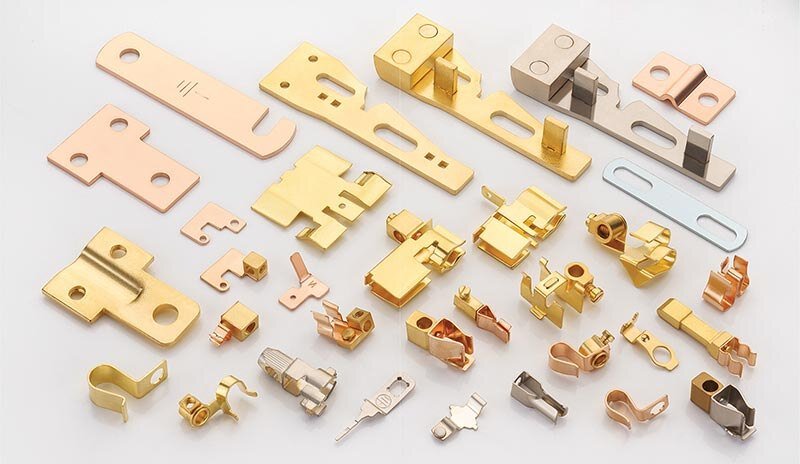
Blanking vs. Other Metalworking Processes
Each metal cutting process has distinct characteristics that make it optimal for specific applications. Let’s compare blanking with other common methods to help you choose the right process.
Blanking vs. Punching
While blanking and punching involve cutting material from a sheet, they serve different purposes.
Blanking focuses on creating a specific shape or part from the sheet metal, with the removed piece being the desired product.
In contrast, punching typically involves creating holes or cutouts in the sheet, and the removed material is considered scrap.
Blanking vs. Shearing
Blanking and shearing are similar processes, but they differ in their applications.
Blanking is specifically designed to create distinct shapes or parts from sheet metal. In contrast, shearing involves cutting straight lines across the material to reduce its size or shape without producing a specific part.
Shearing is often used for trimming or resizing sheets while blanking focuses on producing individual components with defined geometries.
Blanking vs. Laser Cutting
Laser cutting is a more advanced technology that uses focused laser beams to cut through materials. Laser cutting offers greater flexibility in terms of design complexity and material thickness.
However, compared to the laser cutting speed, the blanking process will be quicker for high-volume production.
Conclusion
Sheet metal blanking is a cornerstone of modern manufacturing, offering a perfect blend of speed, precision, and cost-effectiveness. From automotive components to aerospace parts, this versatile process delivers consistent quality across high-volume production runs.
Ready to optimize your production process with sheet metal blanking? Our engineering team specializes in helping manufacturers select and implement the right blanking solution for their specific needs. Contact us today for a free consultation and quote.
Hey, I'm Kevin Lee

For the past 10 years, I’ve been immersed in various forms of sheet metal fabrication, sharing cool insights here from my experiences across diverse workshops.
Get in touch

Kevin Lee
I have over ten years of professional experience in sheet metal fabrication, specializing in laser cutting, bending, welding, and surface treatment techniques. As the Technical Director at Shengen, I am committed to solving complex manufacturing challenges and driving innovation and quality in each project.

